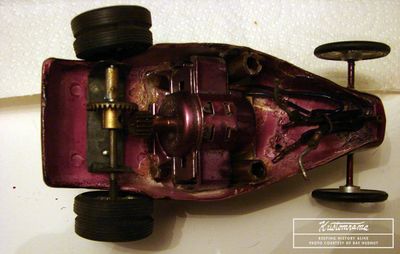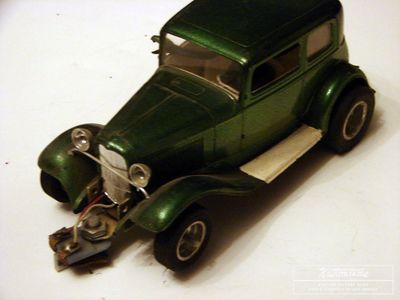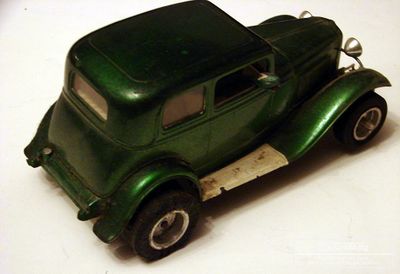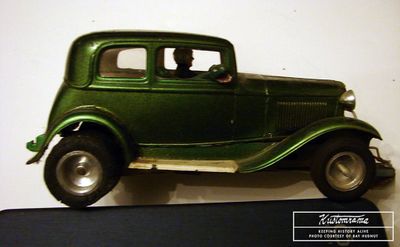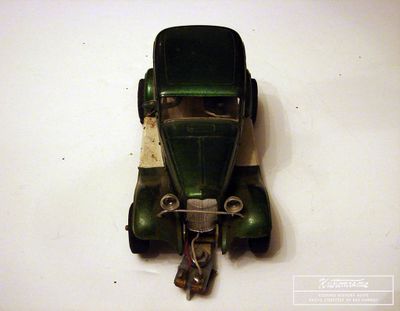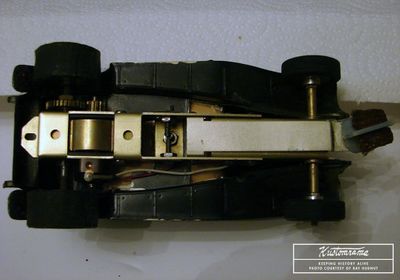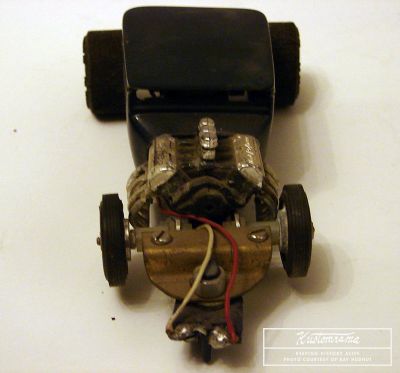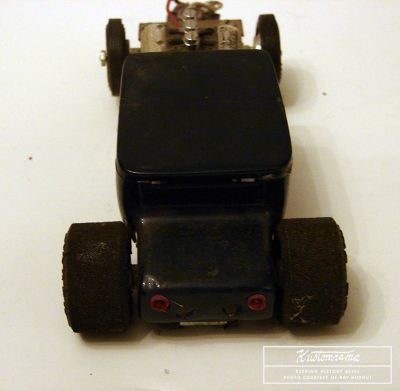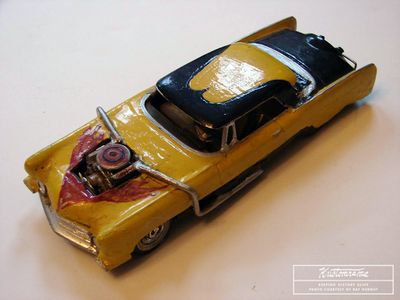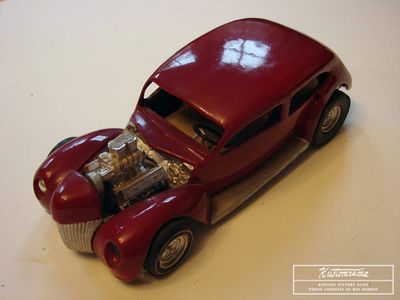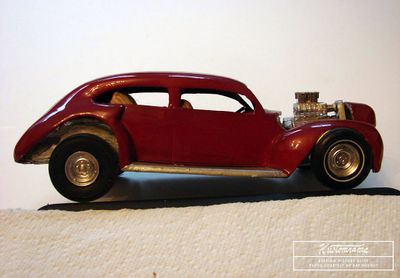Ray Hudnut



Ray Hudnut of Portland, Oregon. In December of 2020 Ray told Sondre Kvipt of Kustomrama that his mother divorced his biological father in 1951. "My older brother, my mom, and I moved to Portland to be near her sister. The U.S.Navy fleet annually comes to Portland, and that's where my Mom met my stepdad, that I now call Dad." Ray's stepdad was just getting out of the Navy after 4 years. "He immediately married my Mom, joined the U.S.Air Force and we all moved to Castro Valley, California where he was to be stationed." Ray's older brother Bernie didn't like his mother's new husband at the time, so he left. "We lived in a rented 3 room cabin with a carport, but we had a TV set and a brand new 1952 Mercury hardtop! "[1]
Contents
Back to Portland
When Ray's dad completed his 4-year tour with the Air Force in mid-1956, the family moved back to Portland.[1]
Hot Sounds and Slot Cars
The 1950s was a transformative period in American leisure and technological innovation. Within this zeitgeist of post-war excitement, slot car racing became an emblematic pastime for enthusiasts, young and old. Cities, including Portland, were alive with the buzzing and whirring of tiny electric cars racing around tracks in homes, basements, and commercial raceways. Before Bernie joined the U.S. Marines he used to fool around with electrical things in Ray's biological father's appliance workshop in Roseburg, Oregon. "Then in the military, he was able to get formal electronics training. And then, when he got out, his electrical aptitude, experience, and training got him a job with IBM in Portland, Oregon.[1]
Bernie was the only one in the family at the time who was interested in technology and electronics, "which caused him to buy the first stereo record player I'd ever seen. He added wire (and possibly some other electronic enhancements) so he could set up his system in my folk's backyard...and place his speakers about 200 feet apart! Then he'd turn up the volume and play his 33 rpm (LP) long-playing record called "The BIG Sounds of the Drags!" by Capitol Records. WOW! It sounded like big rail jobs were coming to the line and lighting them up!!!!" Ray doesn't think the neighbors ever complained, "but I wonder what they thought was going on in our backyard?!"[1]
"Slot car racing became big business in Portland about that same time, and slot car tracks were popping up all over the place so racers could rent time and race against other slot car enthusiasts. Initially, they were few and far between and weren't practical for us living at the far edge of town. So, Bernie brought home three 10 ft long 1" x 12" wooden boards. Hooked them end to end in my folk's basement, and stapled heavy gauge bare copper wire on both sides of two grooves he routed lengthwise into the boards. Then he connected a 'wall current to 24VDC' train transformer to a switch and to the bare copper wires....presto, we had our own 2-lane drag strip! At the end he placed several big pillows, to keep the cars from hitting the concrete basement walls when they left the track at full speed."[1]
Bernie used 1/32 scale plastic car model kit bodies for his racers, and sometimes used rollers from printing machinery. "His cars used actual train motors (about $20/ea) that could take the full 24VDC and were super fast! Ken and I had to purchase cheapo can motors (about $1/ea) from Vic's Hobby Shop in the Hollywood District of Portland, Oregon, along with drive gear sets. We tinned twisted copper electrical stand wire and bent them to contact the strip's copper wires while still keeping our front tires on the track. Then we'd use a wood burner to melt plastic around a metal rod that would follow the routed track groove. We used the wheels/tires from 1/32 Lindberg kits and those from 1/25 AMT kits, both gave little traction, but it mattered little since Bernie's cars were so fast. We also used the brass tubing from inside exhausted ball point pens to make our rear axles, then heated pins and drove them through the plastic wheels and through holes we previously put in the tubing."[1]
"One jalopy I really liked to race was my 1/32 chopped and channeled Ford pickup with ultra-short bed and fully exposed Hemi engine with a carb 6-pack. I could just wedge one of the big cheap can motors between the doors. Then, when Bernie threw the switch, the rod would spin its rear tires like crazy, then the rear would swing to the right and left and finally take off straight....getting about 1/3 the way down the track before a big puff of smoke would pour out of it, and it'd slow to a stop. The motors were cheap and only designed for 6VDC!! But it was a really cool sight, even though I could only get one run out of it per motor!"[1]
"Slot car racing is one thing (the only thing?) that Ken (my little brother), Bernie (my big brother), and I did together. Bernie'd drive us all down to a rental track and we'd race until we ran out of money, our cars broke, or the shop kicked us out. Ken who was about 14(?) only raced purchased cars, I raced purchased chassis' with AMT 1/25 bodies (like my metallic green '32 Ford Victoria full fendered sedan with a scale model driver... and boa constrictor hanging out the passenger's window!), but Bernie liked building his own chassis' and use 1/32 scale plastic models bodies."[1]
"He had one sinister-looking '52 Chev fastback called the "Black Widow" that actually rumbled the track as it went around the plywood rental course. It was basically a heavy IBM electric motor in a custom brass tube chassis that he'd stretched the Chev body over after carefully heating it, then painted it flat black...and the words "Black Widow". It was small compared to the other cars, but it never jumped out of the groove. And any car that swerved into its path was in serious trouble."[1]
"After a while, the purchased cars were getting so fast that 10-year-olds with the cash were beating old timers who had painstakingly built their cars. One day, Bernie was making some serious speed coming out of a corner and onto the front straightaway when a just purchased super-fast car driven by a 10-year-old spun out in Bernie's path. Upon impact, the new car exploded into a zillion pieces. They bounced off the ceiling and walls...everyone was ducking for cover....except Bernie. His car was still in the groove and entering the next bend at full speed. The 10-year-old left crying. Ah, the good old days!" In 2023, Ray still had most of his old slot cars, "as well as models I built for show...even some I built in 1956....and one Bernie built for me before 1956."[1]
The Kidney Kicker
"My Dad was a very conservative and frugal man, and a letter carrier for the US Post Office. He bought a Willys Aero 2dr sedan with a 4cyl in about 1960 to commute to work. I asked him if I could paint some cool stuff on his car, AND HE AGREED!! So, I went to work....first gold scallops, then a large round furry figure with big bare feet I called "The Kidney Kicker." Next, since the quarter windows were cracked like a spider web, I painted a web and in the foreground about 12" high black spider with a big smile, top hat, white vest, and red bow tie, white gloves, white spats, and a cigar. Next, since all the 6 or so knobs on the dash were round, I painted them and the horn button as bloodshot eyeballs. My Dad continued to drive it to work!!"[1]
"In about 1959, my Brother Bernie's four-year enlistment was up with the U.S. Marines, and he came to live with us for a couple of years. On his own, he visited the drag races that were happening at the McMinnville Oregon Airport (1958-66) and showed us the 35mm slides he took. I had only seen drag race machines and some race coverage in hot rod magazines and was really excited."[1]
Immediately Ray and Bernie started dreaming of having their own drag racer, and their attention focused on their Dad's commuter, the 1952 Willys Aero 2dr sedan. "Neither Bernie nor I had any automotive mechanical experience (nor did our folks or neighbors), but that didn't stop us. We knew that to be a real race car, it had to be loud, so to improve the performance of the stock 134 CID inline four flathead we punched holes in my Dad's mufflers! Then from the slide pictures, we knew that a true drag race sedan had to be "jacked up"...higher in the rear than in the front, so we jacked up the rear end and hammered in wooden 4x4s cut to fit tightly between the axle and frame. Then we took it for a test ride! Wow! did it seem fast! This was really cool! I was hoping that some of my school buddies could see me now!!"[1]
"...Until we crossed Sandy Blvd while traveling along Prescott Street (in Portland, Oregon). Sandy has a really tall crown, so there are definite gutters on either side. On top of that, Prescott crosses it at an angle. So, we hit the first gutter at 35mph...the front compressed down, then sprang up just as the rigid rear hit the gutter! We were shot into the roof like cannon balls just as we hit the gutter on the other side of Sandy...which slammed us down into the sprung bench seat 'til we bottomed out on the floorboards! By this time, Bernie had hit the brakes just as we skidded the rigid rear into the second gutter, which again slammed us up into the roof!"[1]
"The crossing angle caused the whole car to not only jump up and down but like it was twitching crazy all over the place. We skidded off to the shoulder of the road and realized we'd lost one of the 4x4 struts. Being super embarrassed, we decided to leave the 4x4 where ever it ended up and find a new way home in case anyone had seen the event. Bernie managed to get it back home, but the car looked like a dying duck, with one rear corner still standing tall and the other down low. (Today, no one would even notice, they'd just think we had airbags.) We removed the 4x4 and decided we weren't quite ready to go racing. I'm not sure how we patched up the mufflers. (Sorry, Dad!)"[1]
Illuminated Scavenger Pipes on Mom's Dodge
Ray's dad wouldn't let him have his own car while in high school, but in 1961, when he was in his junior year, he bought a second car, "so your Mom has transportation when I'm at work.' But I don't remember my Mom ever driving the car....I did, though, on a lot of dates. It was a 1954 blue two-tone Dodge Royal 4dr...with 241 cid Hemi V8 and automatic."[1]
Without asking permission, Ray cut the exhaust on his Mom's Dodge to make true dual pipes that went directly into glass pack mufflers and then 36" long trumpet-tipped chrome scavenger pipes. "Why they never scolded me for that, I don't know, but they sure sounded cool...and I figured out how to make that automatic sound like I had a stick to sound even cooler! ...when I was away from home." The car had a lot of original ground clearance, so the pipes were easy to see during the daytime, but hard to see at night. "So I mounted a pair of red beehive clearance lights under the car to illuminate them. It was a frumpy kind of car for a kid, but it sounded really good...and now it had PIPES!"[1]
"This was the same car I had the pair of chrome auxiliary radio speaker grilles on the rear package tray. The radio didn't work, and there were no speakers under those grilles... gravity held them in place on a white Turkish towel to look cool. And I had taken the guts out of an old brass windup alarm clock, illustrated a tach face with a red needle, and mounted it to my steering column to look like a real tachometer...which was a hot craze at the time. But of course, I couldn't stop there; I had to be ultra cool! So I re-drilled the floor mounting holes for the front bench seat so, with the seat adjusted all the way forward, I could just reach the pedals. But when adjusted all the way back, it was a super make-out seat because it not only went all the way back to the rear seat, but it reclined as it went!!"[1]
"So back to my story that took place on SW Broadway Street in Portland, Oregon, on a Friday night in the summer of 1962. I had strategically placed my car in the curb lane so when the traffic stopped, I'd be visible to all the kids waiting in line to get into the movie house. Then I'd dazzle them with my undercarriage red lights and chrome PIPES! I flicked on the toggle and glanced over at the crowd to see their reaction. First, the crowd turned, and I was sure I heard oohs and aahs...then they started pointing and looked shocked! Suddenly I smelled and saw smoke rolling up from under my dash! My dash wiring was on fire!! ...as well as the wiring under my car! I reached under the dash with one mad grab and pulled a handful of electrical wires out, breaking some of their connections....luckily, the ones that had shorted out."[1]
"About that time, the signal changed, and traffic moved ahead, so I could make a quick right turn and shot to a place where I could park and assess the damage. It must have been quite a sight for the movie-goers to see the flames, and then the car rush off with smoke trailing out of the windows! I'd fried a number of wires....insulation was entirely gone! The carpet was burned, and under the car, the undercoating was missing in spots. Before I got home, I aired out the car and got rid of the wiring....put the seat back in its original mounting place...and never tried that again. What happened was that when I moved the seat to the new mounting, I had accidentally clamped down on the wires going to the lights. The minute I turned on the lights, the wires shorted to the floor and fried.....because I had not yet learned to use fuses."[1]
References
Did you enjoy this article?
Kustomrama is an encyclopedia dedicated to preserve, share and protect traditional hot rod and custom car history from all over the world.
- Help us keep history alive. For as little as 2.99 USD a month you can become a monthly supporter. Click here to learn more.
- Subscribe to our free newsletter and receive regular updates and stories from Kustomrama.
- Do you know someone who would enjoy this article? Click here to forward it.
Can you help us make this article better?
Please get in touch with us at mail@kustomrama.com if you have additional information or photos to share about Ray Hudnut.
This article was made possible by:
SunTec Auto Glass - Auto Glass Services on Vintage and Classic Cars
Finding a replacement windshield, back or side glass can be a difficult task when restoring your vintage or custom classic car. It doesn't have to be though now with auto glass specialist companies like www.suntecautoglass.com. They can source OEM or OEM-equivalent glass for older makes/models; which will ensure a proper fit every time. Check them out for more details!
Do you want to see your company here? Click here for more info about how you can advertise your business on Kustomrama.





